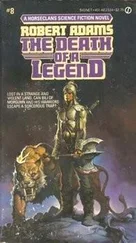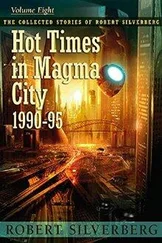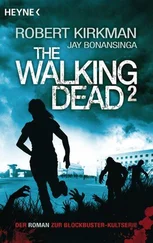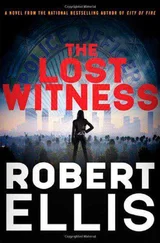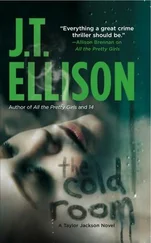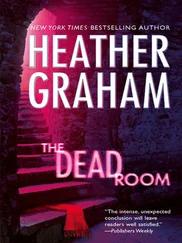Robert Ellis - The Dead Room
Здесь есть возможность читать онлайн «Robert Ellis - The Dead Room» весь текст электронной книги совершенно бесплатно (целиком полную версию без сокращений). В некоторых случаях можно слушать аудио, скачать через торрент в формате fb2 и присутствует краткое содержание. Жанр: Триллер, на английском языке. Описание произведения, (предисловие) а так же отзывы посетителей доступны на портале библиотеки ЛибКат.
- Название:The Dead Room
- Автор:
- Жанр:
- Год:неизвестен
- ISBN:нет данных
- Рейтинг книги:3 / 5. Голосов: 1
-
Избранное:Добавить в избранное
- Отзывы:
-
Ваша оценка:
- 60
- 1
- 2
- 3
- 4
- 5
The Dead Room: краткое содержание, описание и аннотация
Предлагаем к чтению аннотацию, описание, краткое содержание или предисловие (зависит от того, что написал сам автор книги «The Dead Room»). Если вы не нашли необходимую информацию о книге — напишите в комментариях, мы постараемся отыскать её.
The Dead Room — читать онлайн бесплатно полную книгу (весь текст) целиком
Ниже представлен текст книги, разбитый по страницам. Система сохранения места последней прочитанной страницы, позволяет с удобством читать онлайн бесплатно книгу «The Dead Room», без необходимости каждый раз заново искать на чём Вы остановились. Поставьте закладку, и сможете в любой момент перейти на страницу, на которой закончили чтение.
Интервал:
Закладка:
He found Jill in his office by the printer. She’d pulled the district attorney’s cases for the past ten years. There were hundreds, thousands-the printer spewing out so much paper, all he could think about were dead trees.
“What did Stokes say?” Jill asked.
Teddy shrugged. “I’m toast, but I’m not supposed to know it yet. He gave me a pep talk.”
He sat down at the computer, checking the list on the monitor. They’d made a mistake. Because Andrews was the district attorney, the search parameters were including every case the office had handled since the election.
“We need to stop this thing,” he said.
Jill leaned over his shoulder, grabbed the mouse and hit CANCEL. When the printer continued eating up trees, she shut the machines down to clear the memory and rebooted.
“What’s wrong?” she said.
“I want to narrow the search down to cases Andrews handled on his own as a prosecutor.”
“What are you looking for?”
“Beats me,” he said. “All I know is we don’t have time to look through this much paper.”
They switched places. Jill changed the search parameters. Within a few minutes the printer was spitting out more paper again. There were two hundred and thirty-seven cases. It still seemed overwhelming, but Teddy grabbed the printout, sat at his desk and got started. He had two copies of the list. The first was sorted by verdict, the second by crime.
Teddy started with the second list, weeding out the misdemeanors and concentrating on felonies. There were only seventy-five. When he cross-checked them by verdict, three stood out. Each case occurred within the first two years of Andrews’s promotion to homicide in the district attorney’s office. Each case was a loss.
The first involved a man accused of murdering his wife. She’d been shot once in the chest. Medics couldn’t revive her, and she was pronounced dead at the scene of the crime. The man claimed it was an accident. While cleaning a gun, his wife stepped through the doorway just as the weapon fired. Although he said he didn’t know the weapon was loaded, he was a gun collector and should have. Andrews figured he was lying and prosecuted the case based on interviews with neighbors who had heard the couple arguing earlier in the day. The medical examiner agreed. The woman’s death only required a single bullet because it was a bull’s-eye aimed directly at her heart. But Andrews was a young assistant district attorney at the time. He lacked experience in jury selection. He’d loaded the box with women, thinking they would sympathize with the victim. What he didn’t count on was the defendant. He was a lady’s man. Smooth, handsome, even sympathetic. What Andrews didn’t realize was that every woman in the jury had fallen for the guy. They couldn’t keep their eyes off him. When the man took the witness chair and spoke in his own defense, he worked the women in the jury like Gato Barbieri making it with a saxophone. He spoke of his love for his wife, his devotion, how much he missed her. Wiping tears from his eyes, he said his life had been ruined and didn’t care what happened to him now. The jury bought it, and found the man not guilty. Once he was free and clear, Andrews learned that the man had been having an affair for six months with a younger woman who lived down the street. She’d moved in the day after his release from prison.
The second case involved an armed robbery at a convenience store that ended in homicide. Although the incident occurred after midnight, three people witnessed the shooting. A young man wearing a ski mask walked up to the counter with his gun drawn. Pocketing the cash from the register, he shot the clerk four times before he fled. As he ran across the parking lot, he pulled the mask off and three people got a good look at his face. The murder was even recorded on videotape from a camera mounted behind the counter. Andrews thought the case was a slam dunk. He figured he couldn’t lose, but eventually did. The defendant was a gang member. The names of the witnesses, a matter of record due to their testimony at the preliminary hearing. Fear and intimidation flourished. One by one, the witnesses backed out. And the tape was inconclusive. Because of the ski mask and poor picture quality, identifying the murderer proved impossible. Andrews took the loss, and another murderer was set free.
But it was the third case that must have really gotten to the man. As Teddy read the summary, he wondered how Andrews managed his climb to the top.
It was a brutal case, though much less clear than the others. A teenager stood accused of shooting his girlfriend when he learned she was pregnant. The gun was never found. The crime occurred in an alley off the street at night. Andrews had an eyewitness who saw them standing beneath a street light. A middle-aged woman who heard a gunshot and ran into the boy as he tried to flee. Another sure thing. Another case a young Alan Andrews thought he couldn’t lose. Even better, the boy couldn’t afford to defend himself. Instead, an attorney had been appointed by the court. Andrews had learned his lesson by now, stacking the jury with men who were either grandfathers or fathers of young girls. The defense claimed the boy was innocent. The girl had been shot by someone else no one had seen. The police couldn’t produce the murder weapon and gunshot residue wasn’t found on the boy’s hands. Andrews countered that the boy ran away, ditching the weapon with plenty of time to wash his hands. The defense said the boy ran to get help and introduced testimony from a series of character witnesses. From all accounts, the boy loved the girl and planned to marry her. He’d attended the girl’s pregnancy exam with her doctor, but couldn’t be with her for the results. A friend of the boy testified that they’d talked it over. The boy was hoping she was pregnant and wanted more than one because he’d grown up an only child.
But Andrews had his eyewitness. His sure thing. The middle-aged woman took the stand. She’d heard the shot and seen the boy’s face. She claimed he practically ran into her.
When Andrews was through, the defense attorney spent an hour going over the details in cross-examination. How sure she was and why. Then he spent another hour drilling her on the boy’s physical description. His face. What color his eyes were, their shape and size. And what about his nose, his mouth and hair? The defense attorney was blocking the witness’s view of the defendant. Every time she tried to peek around him, he’d step in her way. The attorney said he wanted to know what the defendant looked like on the night of the murder. Not now.
What Andrews didn’t know, nor anyone else, was that the defense attorney had hired an artist to sit in the courtroom. A young woman who taught at the College of Art. She was sketching the face based on the witness’s description. When the testimony seemed complete, the defense attorney showed the picture to the witness and asked if this was the man who had fled the crime scene. The woman said yes. She was emphatic about it. That picture was him. Then the attorney passed the drawing to the jury for a look. It wasn’t the defendant at all. The likeness wasn’t even close.
Teddy’s eyes rose above the summary, searching out the defense attorney’s name. It was a man he’d never heard of, and this surprised him. His work was impressive and stood out.
Teddy set the stack of summaries down. Disappointed that he hadn’t found anything relevant to the Holmes case, he let his mind wander. Three trials. Three losses. Andrews had licked his wounds after that and turned his life around. Become more shrewd and found a way to win. Still, there had to be something. A reason why Andrews wanted to plea the Holmes case away. Andrews needed to get something in return for the deal. There had to be some kind of tradeoff.
Читать дальшеИнтервал:
Закладка:
Похожие книги на «The Dead Room»
Представляем Вашему вниманию похожие книги на «The Dead Room» списком для выбора. Мы отобрали схожую по названию и смыслу литературу в надежде предоставить читателям больше вариантов отыскать новые, интересные, ещё непрочитанные произведения.
Обсуждение, отзывы о книге «The Dead Room» и просто собственные мнения читателей. Оставьте ваши комментарии, напишите, что Вы думаете о произведении, его смысле или главных героях. Укажите что конкретно понравилось, а что нет, и почему Вы так считаете.


